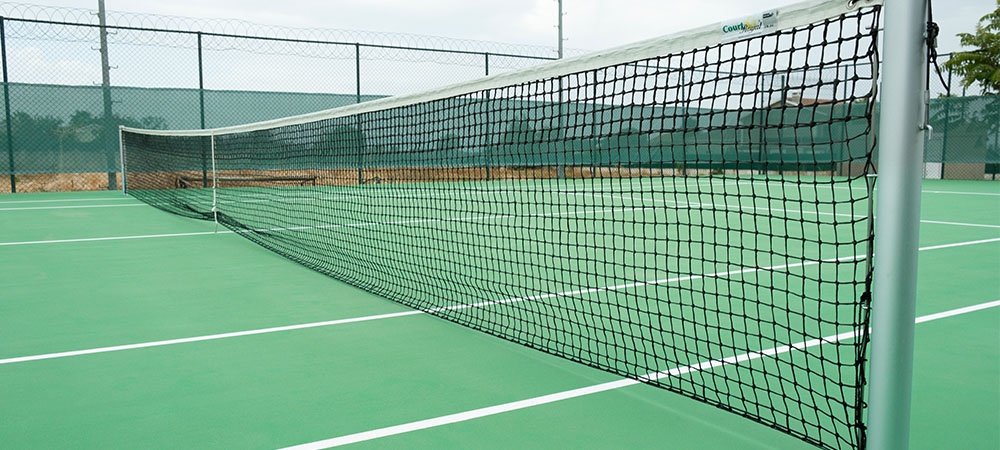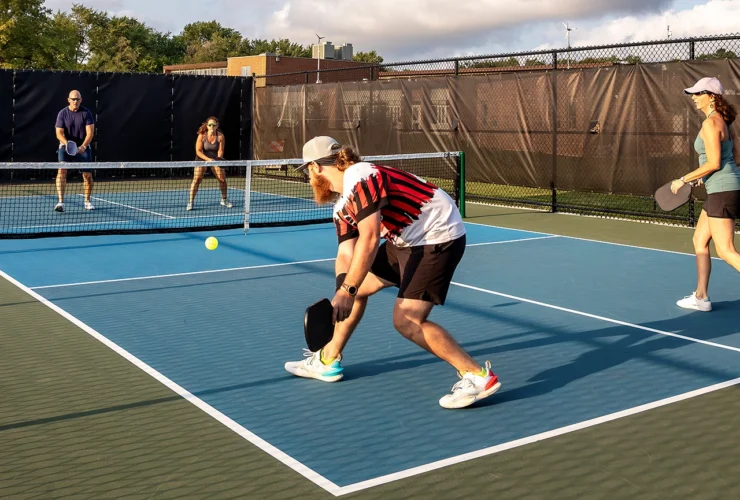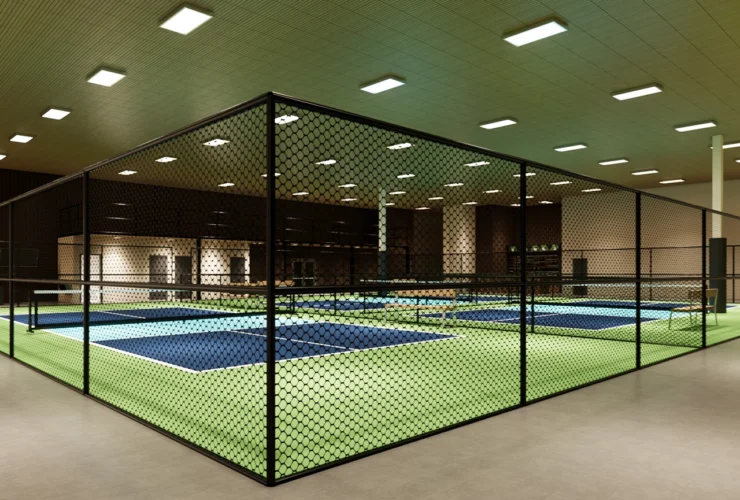What are the Benefits of Tennis Court Resurfacing?
Is your tennis court looking tired and old? Or has it started to play badly? If so, you’re probably wondering what to do with it. One of the best options is resurfacing, but what are the benefits of tennis court resurfacing?
Here we’re going to look at the question in plenty of detail. We’ll also answer some common FAQs, so you get all the info you need. Let’s get started!
Benefits of Tennis Court Resurfacing
There are seven main benefits of tennis court resurfacing, let’s check out what they are:
1. Less Chance of Injuries
Over time tennis courts will break up and start to deform. This can include a depression starting to form, cracks in the surface, or the surface becoming too slick and slippery. There are many issues a court can develop.
All of these can lead to injuries such as sprains, muscle tears and breaks. Resurfacing your court will address all of these issues. It will make injuries much less likely and the court much more appealing to play on.
2. Resurfaced Courts Look Better
Whatever we own, we want to look good. That could be our watches and cars but can even be our pools or tennis courts. If your existing surface has been neglected for a few years, then it’s not going to look very good.
This could be surface cracks, weeds growing through the surface, or worn-away painted lines, among many other issues. If you want your surface to look good at all times, then you’ll need to resurface it every couple of years.
3. New Courts Play Better
This is perhaps the most important point; resurfaced courts simply play better. Older courts can be two-paced. That means that the ball will come off the surface quickly with one shot but slowly on the next. This makes it very difficult to play on.
There will be other issues too. Cracks can drastically change the direction of the ball, and depressions or bumps can make the ball stay low or jump up. If you’re noticing any of these issues, then they’ll be solved with resurfacing.

4. A Chance to Change the Surface Type
When resurfacing, many people will often change their surface with the same type without even thinking. However, resurfacing gives you a chance to do something new. Why not switch it up and introduce some variety?
For example, you may have a hard court acrylic surface that you want to change to asphalt or concrete. You may even want to go a little bolder and change it to something such as artificial grass or clay. Before resurfacing, remember that you don’t need to change it to the same surface.
5. Repairs Are Only Short-Term
If you notice a minor problem with your surface, then there is a temptation to repair it rather than replace it. While this can make sense a lot of the time, it will always be a short-term option, and further maintenance will be constantly required.
For example, if you notice a crack in one area and repair it, then it won’t be long until a new crack appears somewhere else. Resurfacing your court will avoid this constant maintenance and give you greater peace of mind to enjoy your court.
6. Increase the Lifespan
Eventually, your court may need a full repair. Minor issues such as depression can become huge problems if not corrected. Resurfacing your court allows you to quickly assess if there are any further concerns.
You are then able to tackle them head-on before they become a bigger, and more expensive, issue. Due to this, resurfacing can increase the overall lifespan of your court until it needs a complete rebuild.
7. Keeps Its Value
Tennis courts will more than likely increase the value of your home or property. Conversely, it may negatively affect the value if it’s clear that it needs repair or replacement. Resurfacing will keep your court looking its best and keep the value high.

Tennis Court Resurfacing FAQs
What is the biggest mistake with tennis court resurfacing?
When resurfacing the court, it’s important to check if there are any underlying problems. Have depressions been caused by a poor sub-surface? Have cracks emerged due to subsidence? If these issues aren’t addressed, then you’ll need to resurface your court again very soon.
Should you hire a tennis court resurfacing expert?
It always makes sense to get an expert eye. An expert will know whether repair or replacement is the best option, give advice on potential problems, and the best surface material, and give an accurate estimate of the cost.
Can I resurface my own tennis court?
Technically you can, but it’s never advised. Resurfacing a court is difficult, would take a huge amount of time on your own, and requires specialist equipment. It’ll make your life much easier if you bring in experts to do the job.
How often does my court need resurface?
This can vary wildly. A court in a moderate climate that’s used once per week may last over a decade. A court used every day in places with extreme heat or cold may struggle to last over a year. On average, for most courts, resurfacing will be required every 3 to 5 years.
How long will the resurfacing take?
This will depend on the company and if any additional repair work is required. Usually, the whole process will take 3 to 7 days, but this may be a little quicker or later, depending on the scale of the task.
What is the cost of resurfacing?
The cost of resurfacing averages out around $6,000, but the expected range is $3,500 to $9,000. While this is the expected range, it may be a little more or less depending on other factors.

Should I repair or resurface my tennis court?
It’s a great idea to get the opinion of a resurfacing expert. They’ll be able to tell if you need more extensive work done on your court. It’s likely that all you’ll need is for your court to be resurfaced.



